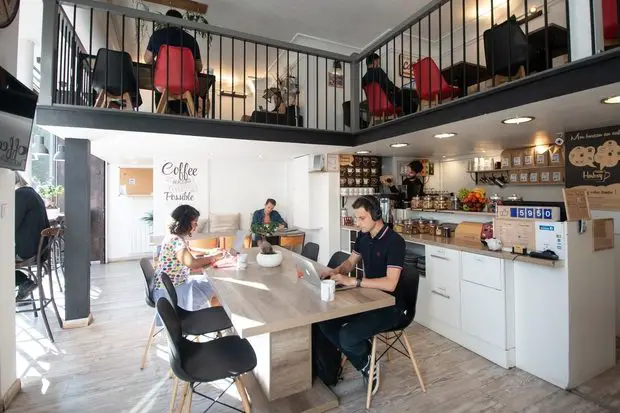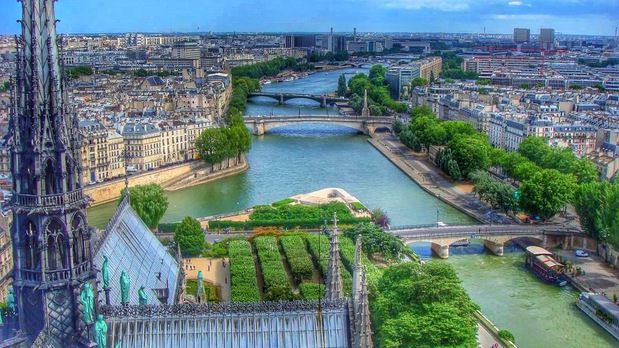Planning a trip to Paris? There are a few things you should know to make your visit smoother and more enjoyable. My guide will help you feel prepared and avoid common mistakes. Let’s make your Paris experience unforgettable!
1. When to Visit Paris
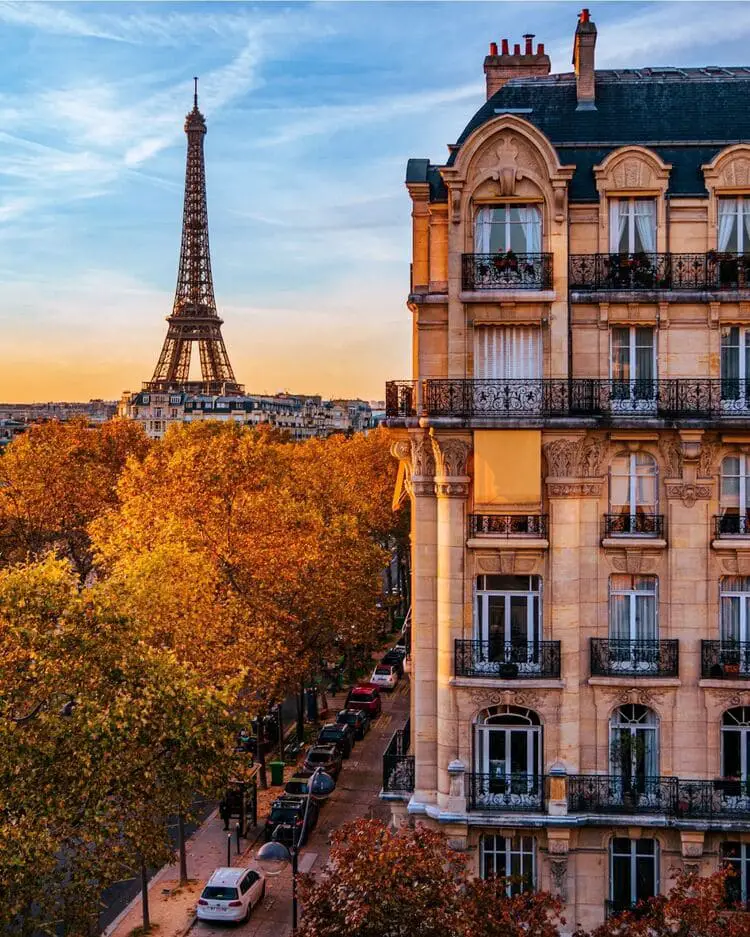
Paris is beautiful year-round, but the best time to visit depends on your priorities.
- Spring (March–May): Mild weather, blooming gardens, and fewer tourists than summer. Perfect for exploring parks like Jardin du Luxembourg.
- Summer (June–August): Long daylight hours (sunset after 10 PM!), but high prices and big crowds. Some locals leave for vacation, so some smaller shops and restaurants may close in less touristy areas.
- Fall (September–November): Cooler weather, colorful autumn leaves, and fewer tourists. A great time for sightseeing without the summer rush.
- Winter (December–February): Cozy cafés, festive Christmas markets, and lower prices. It rarely snows, but the days are short, with sunset around 5 PM.
If you prefer fewer crowds and better deals, consider visiting in spring or fall instead of summer.
More details: The Best Times of the Year to Visit Paris
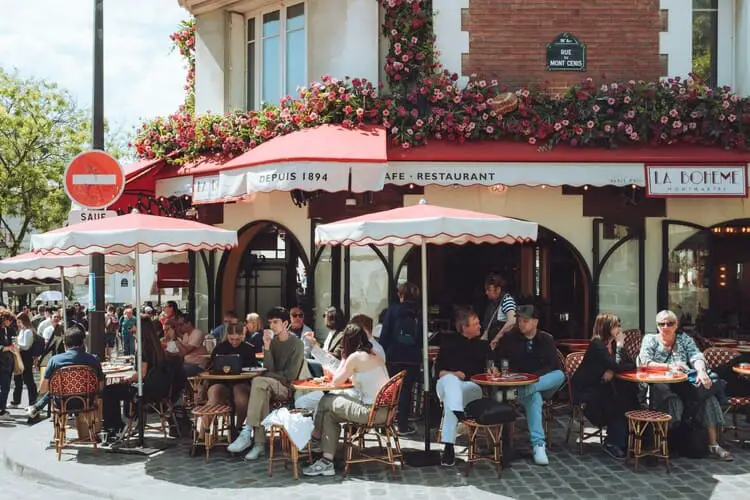
2. Understanding Arrondissements
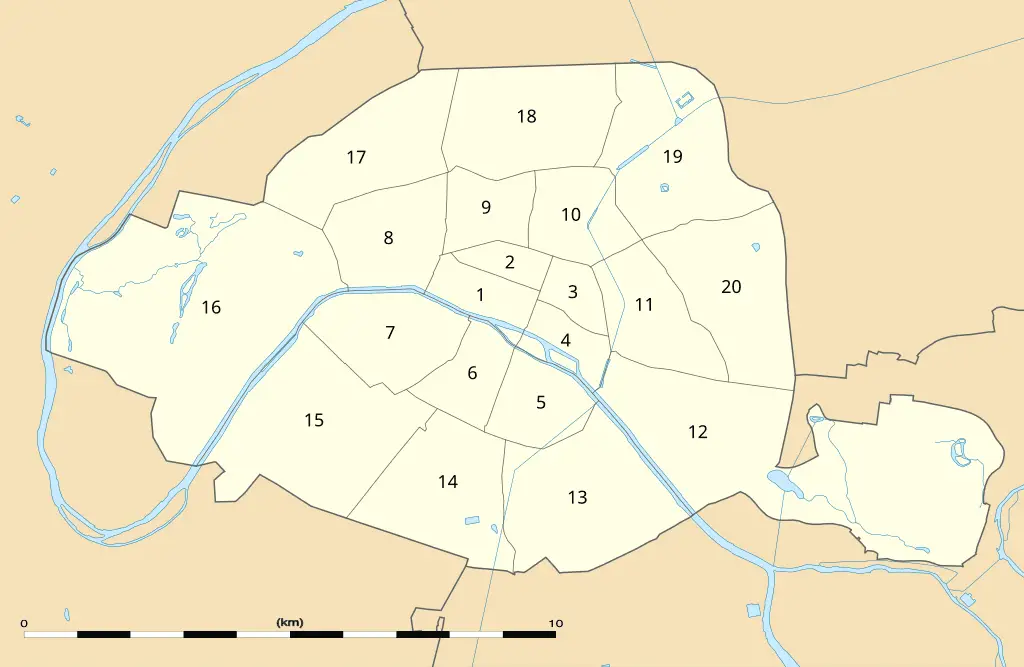
Paris is divided into 20 arrondissements (districts), each with its own charm and personality.
- They spiral out from the city center like a snail, with the 1st arrondissement at the heart.
- Lower numbers (1st–8th) are more central and include major landmarks like the Louvre, Eiffel Tower, and Notre-Dame.
- Higher numbers (9th–20th) are more residential, trendy, or up-and-coming.
- Each arrondissement has a unique vibe:
- 1st: Louvre, Tuileries Garden (historic and elegant)
- 4th: Le Marais, Île de la Cité (trendy and historic)
- 5th: Latin Quarter (student-friendly, lively)
- 7th: Eiffel Tower, Musée d’Orsay (classic Paris)
- 18th: Montmartre (bohemian and artistic)
Where you stay depends on your style—central areas are convenient, while outer districts offer a more local feel.
Related read: Ranking of Paris’ Arrondissements (Least To Most Interesting)
3. Where to Stay in Paris
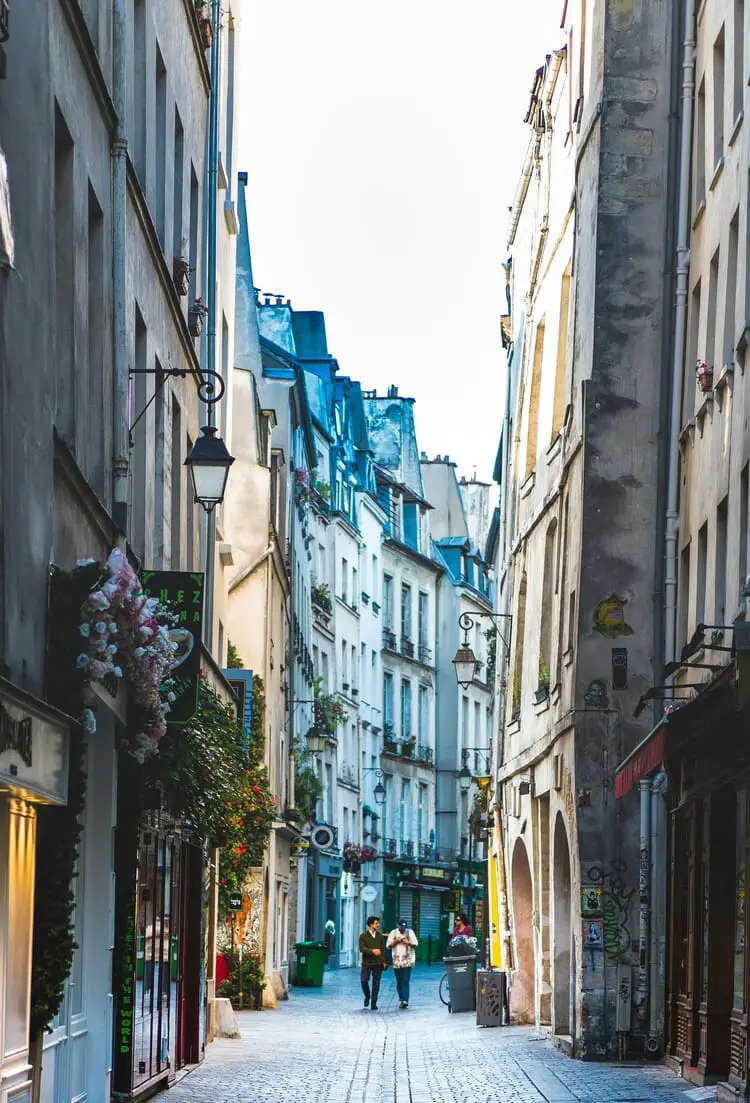
Paris has many different neighborhoods, each with its own vibe.
Here are some quick recommendations:
- For first-timers: Stay central (1st or 5th arrondissement) to be close to major attractions.
- For a charming village feel: Montmartre (18th) offers cobbled streets and artistic history.
- For shopping and nightlife: Le Marais (3rd/4th) is trendy and full of great cafés.
- For a classic, upscale experience: Saint-Germain-des-Prés (6th) is elegant and historic.
Avoid booking hotels far from the center just to save money. You’ll lose time commuting and may end up spending more on transport.
Paris is best explored by foot, so staying in a well-located area makes a big difference!
Related read: Where to Stay in Paris: A Guide to the Best Areas and Neighborhoods
4. How Much Time to Spend in Paris
Many visitors spend 3–4 days in Paris, but more time is always better!
- Short trip (3 days): Focus on must-sees like the Eiffel Tower, Louvre, and Seine cruise.
- 5–7 days: Explore different neighborhoods, visit more museums, and take a day trip to Versailles or Giverny.
- More than a week? You’ll have time to enjoy hidden gems, try amazing restaurants, and feel more like a local.
Don’t overpack your schedule—leave time to wander, relax at cafés, and enjoy the Parisian atmosphere.
You won’t see everything in one trip, and that’s okay!
Related read: How Many Days Do You Need to Visit Paris?
5. Tipping & Restaurant Etiquette

Tipping in France is not obligatory like in some other countries.
- Service is already included in restaurant bills, so there’s no need to leave a large tip.
- If you enjoyed the service, rounding up the bill or leaving €1–€3 is a polite gesture.
- Waiters won’t bring the check unless you ask! Say “L’addition, s’il vous plaît.” when you’re ready to pay.
At cafés, it’s common to pay at the counter before leaving instead of waiting for the bill.
Also, water isn’t automatically free—ask for “une carafe d’eau” to get tap water instead of pricey bottled water.
6. Getting Around in Paris
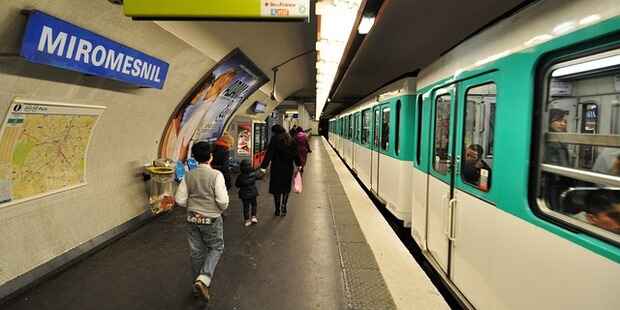
Paris has great public transportation, and you don’t need a car!
- The Metro is the fastest way to get around. A single ticket costs about €2.50, but multi-day passes are available.
- Buses are also reliable and a good way to see the city while traveling.
- Walking is one of the best ways to explore Paris, as many attractions are close together.
- Taxis and Uber are available but more expensive. Be careful—taxis should be taken from official stands, not flagged down.
- Don’t rent a car! Parisian traffic is chaotic, parking is a nightmare, and public transport is far more efficient.
If you’re staying for a few days, consider getting a Navigo Easy card for easy Metro and bus rides.
7. Using Money in Paris
France uses the euro (€), and most places accept credit cards.
- Tap-to-pay is very common, so Apple Pay, Google Pay, and contactless cards work almost everywhere.
- Carry a little cash for small bakeries, markets, or cafés that have a minimum card limit.
- ATMs are safe to use, but avoid currency exchange booths at airports—they charge high fees.
There’s no need to bring lots of cash from home—you can withdraw euros from ATMs in Paris for a better exchange rate.
8. The Best Way to See Paris
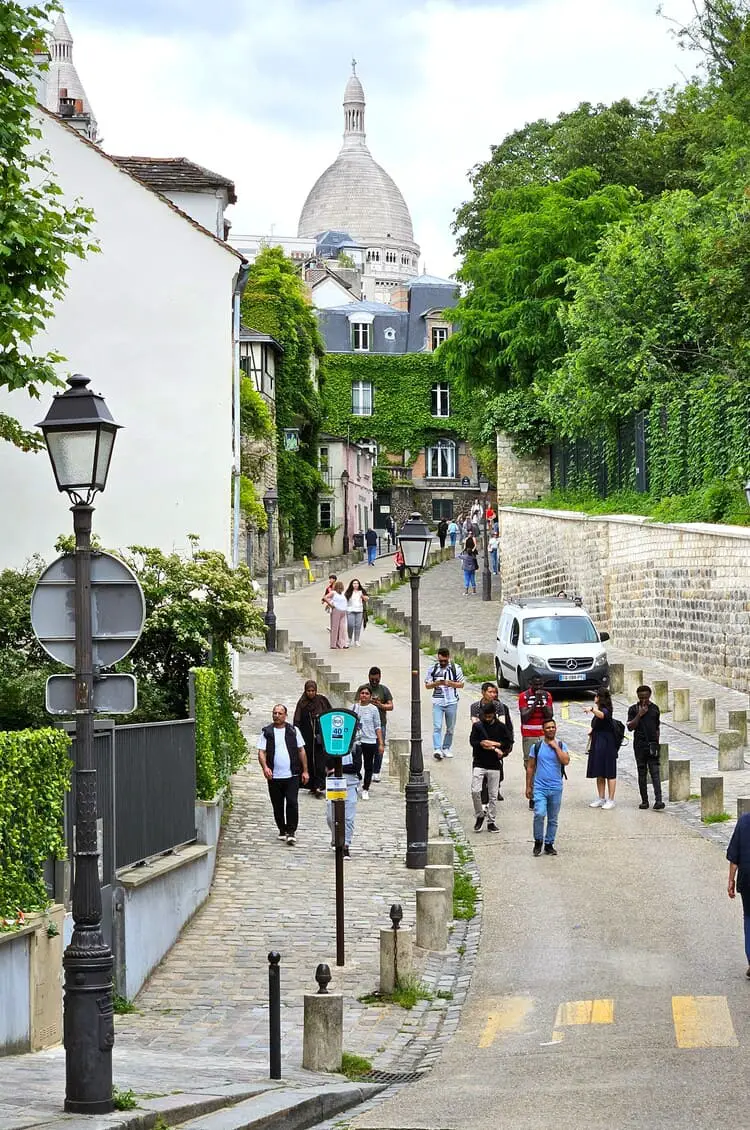
Paris is a walkable city, and the best way to explore is on foot.
But that is not all:
- Many top attractions (Louvre, Notre-Dame, Eiffel Tower) are within walking distance of each other.
- Boat tours on the Seine offer a magical view of Paris, especially at night.
- Bike rentals (like Vélib’) are available, but cycling in traffic-heavy areas can be tricky, despite numerous bike lanes.
- Hop-on-hop-off buses are useful for first-timers but aren’t necessary if you enjoy walking.
Plan your days around specific neighborhoods so you don’t waste time commuting.
Paris is best enjoyed at a slower pace, so take time to wander!
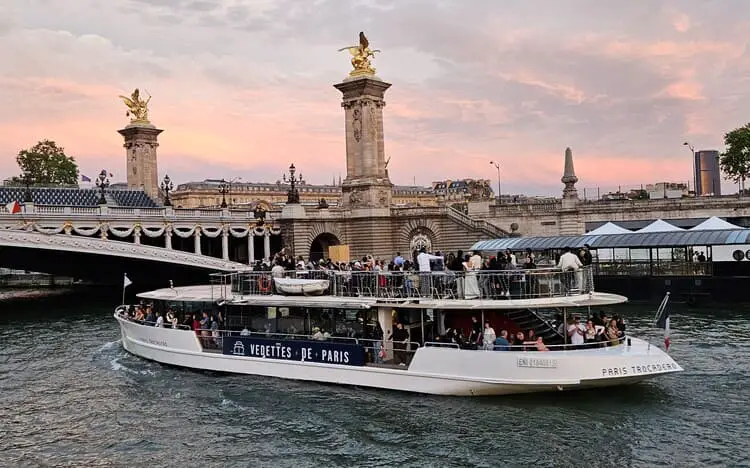
9. Speaking French in Paris
You don’t need to be fluent, but knowing a few basic French phrases helps a lot!
- Always say “Bonjour” (hello) when entering a shop or restaurant—it’s considered rude not to.
- Learn a few key phrases like merci (thank you), s’il vous plaît (please), and excusez-moi (excuse me).
- In touristy areas, many people speak English, but in smaller restaurants, markets, or local neighborhoods, English may not be common.
Parisians appreciate effort, so even if you just start with a polite “Bonjour”, they’ll likely be friendlier and more helpful!
If you need help, Google Translate is a lifesaver.
Related read: Nervous About Communicating in French? My Fool-Proof Guide Has You Covered
10. Booking Attractions in Advance

Some Paris landmarks require or strongly recommend booking tickets in advance.
- Must-book attractions:
- Eiffel Tower (especially in high season)
- Louvre Museum (time slots fill up fast)
- Palace of Versailles (skip long lines)
- Catacombs of Paris (limited daily entries)
- Best to book ahead during peak months:
- Sainte-Chapelle
- Seine River Cruises
- Arc de Triomphe rooftop
- Skip-the-line options:
- Paris Museum Pass (covers multiple museums)
- Guided tours often include fast-track entry
Don’t wait until the last minute! Popular sites can sell out days or weeks in advance, especially in summer.
Booking online saves time and avoids disappointment.
11. What to Wear in Paris
Parisians dress stylishly but practical—comfort is key!
- Wear comfortable shoes! Paris has cobblestone streets and lots of stairs (especially in the Metro).
- Dressing in layers is smart, as weather can change throughout the day.
- Locals tend to wear neutral colors and avoid flashy outfits.
- No need for formal clothes unless dining at a high-end restaurant.
In summer, lightweight fabrics help with the heat. In winter, a warm coat and scarf are essential.
Tourists sometimes overthink fashion—just dress neatly and comfortably.
Here are 2 infographics I made I think might be helpful:


12. Adapters & Phone Use
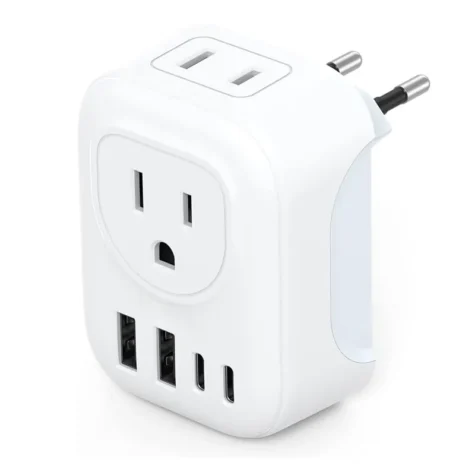
France uses Type E electrical outlets with 220V power, so you’ll need an adapter if you’re coming from the U.S. or U.K.
- A universal adapter is best if you’re visiting multiple countries.
- Most modern phones, tablets, and laptops are dual voltage and will work fine.
- Portable chargers are useful for long sightseeing days!
For phone service:
- Many travelers buy a local SIM card (like Orange Holiday) for affordable data.
- If your phone is eSIM-compatible, you can activate a French data plan online like Airalo or Holafly.
Public Wi-Fi is available in hotels and cafés, but don’t rely on it everywhere.
Related read: The Best SIM Cards and eSIM for Tourists in France
13. Is Paris Safe?
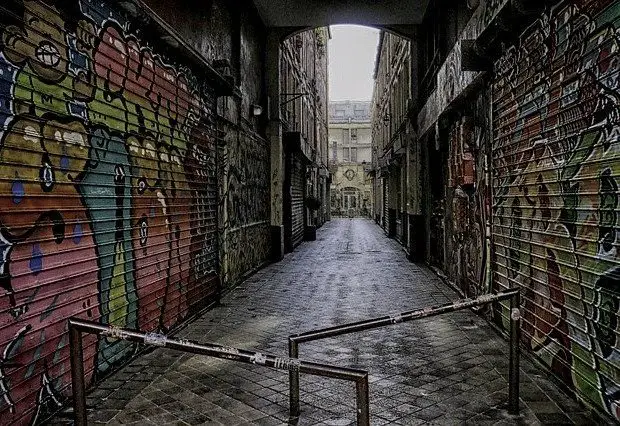
Yes, Paris is generally safe, but like any big city, stay aware.
- Pickpockets target tourists, especially in crowded areas like the Metro, Eiffel Tower, and Montmartre. Keep your bag closed and your phone secure.
- Scams (like fake petitions or bracelet scams) are common near attractions. A firm “No, merci” works.
- At night, main tourist areas are well-lit and safe, but some outer districts can feel isolated.
Paris has a strong police presence, and most visits are trouble-free.
Be cautious, but don’t stress too much—just stay alert and enjoy your trip!
Related read: Paris Safety Guide: Areas to Avoid at Night

With a passion for travel and having visited over 50 countries, Dorian is eager to share his favorite spots and expert tips to help you explore Paris and France like a local.


